Click the MINI E for a high res gallery
For three days before and during the media previews for the Los Angeles Auto Show last week, BMW had about a dozen electric MINIs available for evaluation drives. We finally got our crack at one Thursday morning at the LA convention center. The 6.5 mile loop that BMW laid out was both a terrible route to drive and perhaps the ideal route for an electric car. I don't know what downtown LA streets are like on weekend mornings, but 9 a.m. on a Thursday it's the last place in the world I'd want to be in a car. The 6.5 mile loop took us nearly 45 minutes to complete thanks to what passes for traffic flow in the area. Why anyone would actually want to drive in Los Angeles is a mystery to me, but by the time we were done it was easy to see why Priuses are so popular here. Since you spend more time in hurry up and wait mode than actually driving, an appliance like the Prius is perhaps the ideal choice. But I'm sure you already know that and would rather hear about the MINI E, something you can do right after the jump.
Photos Copyright ©2008 Sam Abuelsamid / Weblogs, Inc.
As we've told you before, the MINI E dispenses with internal combustion, instead substituting and electric drive and energy storage system provided by AC Propulsion. Aside from the graphics that scream to the world that this is no ordinary MINI and the missing tail-pipe, this looks for all intents and purposes like an ordinary MINI. Even inside the car, aside from a battery box the height of the seat backs and stretching to where the rear seat back would be, it again looks fairly ordinary. The main visual difference in the cockpit is the bright yellow painted trim that would normally be aluminum.
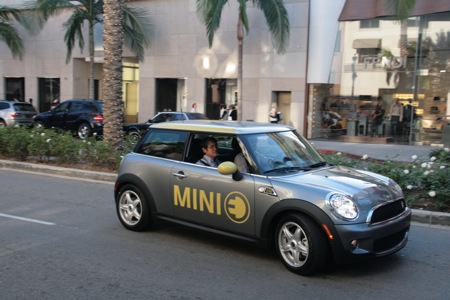
The center of the dashboard is, as usual, dominated by the enormous speedometer. In the lower right corner of the speedometer face where the fuel gauge normally resides is the power flow gauge . From its zero point, it rotates clockwise to indicate power going out and counter clockwise for incoming power from regenerative braking. The gauge behind the steering wheel that normally houses the tachometer is now a battery level indicator.
The starting process is much like an ordinary MINI, insert the fob into the slot behind the right side of the steering wheel, and press the start button. The only difference is that there is no engine to fire up. Instead the battery charge meter spins around to the current state of charge and the warning lights flash on an off for the usual start up checks. There are no sounds anywhere. Apply the brake pedal, put the shifter in drive and then squeeze the go pedal to silently roll away. Once we got outside of the garage, I applied the accelerator a little more firmly and the MINI scooted off the line. BMW claims the MINI E will get 60 mph in just 8.5 seconds and while we didn't clock it or even approach that speed, it is certainly believable.
The video meant to be presented here is no longer available. Sorry for the inconvenience.
Autoblog Green drives the MINI E electric carWhile the MINI E is no Tesla Roadster, it's also no golf cart. Actually go-kart is a term more often used to describe the MINI's handling characteristics. In spite of an electrically assisted steering system, the electric MINI retains the excellent steering feedback of its fossil fuel-fed siblings. With an extra 600 lbs of lithium ion batteries to haul around, the BMW engineers had to adjust spring and damping rates to compensate. This MINI definitely feels much heavier than a standard model and the added inertia is apparent, but in city driving most operators probably won't notice the difference.
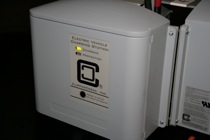
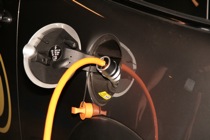
There is however one place where they will notice a significant difference when going electric. All electric cars use regenerative braking to put kinetic energy back into the battery during deceleration. However, I have never felt an electrically driven vehicle with as much regen as this one. Just releasing the accelerator without even touching the brake pedal will bring somewhere between 0.3-0.4g of decel from regen. That's a higher rate of braking than most people use in normal daily driving, which is typically 0.2-0.3 g and much higher than what you get from engine braking.
If you don't touch the accelerator, the regen braking will bring the MINI to a complete stop on its own. While this surely helps maximize the range, it would definitely take some getting used to from drivers and is a bigger step away from conventional drive behavior than most EVs. For light deceleration where a driver would normally modulate the brake pedal, they now modulate the accelerator instead.
The other thing BMW engineers don't seem to have baked in is simulated engine creep. In a conventional car with an automatic transmission, releasing the brake will leave enough torque flowing to let the car creep forward on level ground or at least hold it's place on an incline without touching the gas. Most electrically-driven vehicles simulate this behavior, but not the MINI. Releasing the brake and not applying the accelerator will lead to the car starting to roll back on a hill.
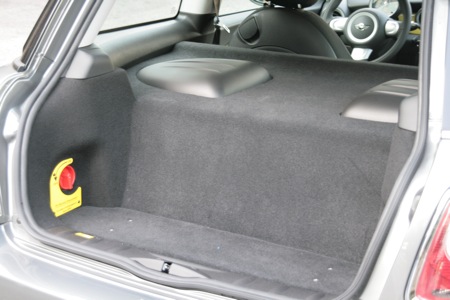
It's not clear if either of these behaviors are in their final form. Both are totally controlled in software and could easily be changed before the company starts delivering cars to customers in about two months. Neither is a show stopper as currently implemented. They are simply different and would require behavioral adjustments on the part of the driver. After each drive, BMW requested people to fill out a short evaluation form so we'll see what, if anything, changes over the next few weeks.
One other thing to remember with any EV is that any accessories you use will cut down on your range. We left the garage, with the battery at about 72 percent charge and the air conditioning off. About halfway through the drive we put up the windows and turned on the air. The result was a much more precipitous drop in battery charge level. By the time we had returned to the garage after only 6.5 miles the battery was down to 49 percent, which doesn't bode well for the 125-150 mile range estimate.
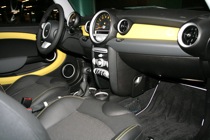
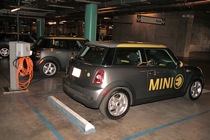
Many of you were disappointed to learn that the MINI E will only be available for a one-year lease at $850/month. Keep in mind that this is just the first stage of BMW's Project I. It is a crash program that began in September 2007 but in typical German fashion they have done an excellent job on the installation. The car behaved fine during our drive, although we did hear of a few minor glitches for other drivers that required shutting and down and re-starting the car.
According to MINI USA VP Jim McDowell, BMW is using this test program to gain knowledge about how people use EVs and how they perform in real world conditions including hot dry weather in California and both hot and humid summers and cold winters in the New York area. The company will take back the cars after 12 months but it has no plans to dispose of them. Instead, they will be examined so the engineers can learn what worked and what didn't. The next step is to build a ground up electric car that will more than likely use a completely different type of lithium battery. McDowell didn't rule out the possibility of extended the program beyond 12 months after the engineers have their way with the cars, but we'll have to see how the first year goes.
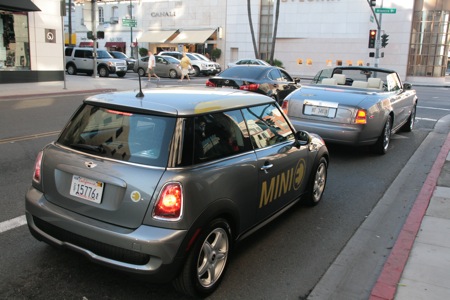
Photos Copyright ©2008 Sam Abuelsamid / Weblogs, Inc.
Our travel and lodging for this media event was provided by the manufacturer.
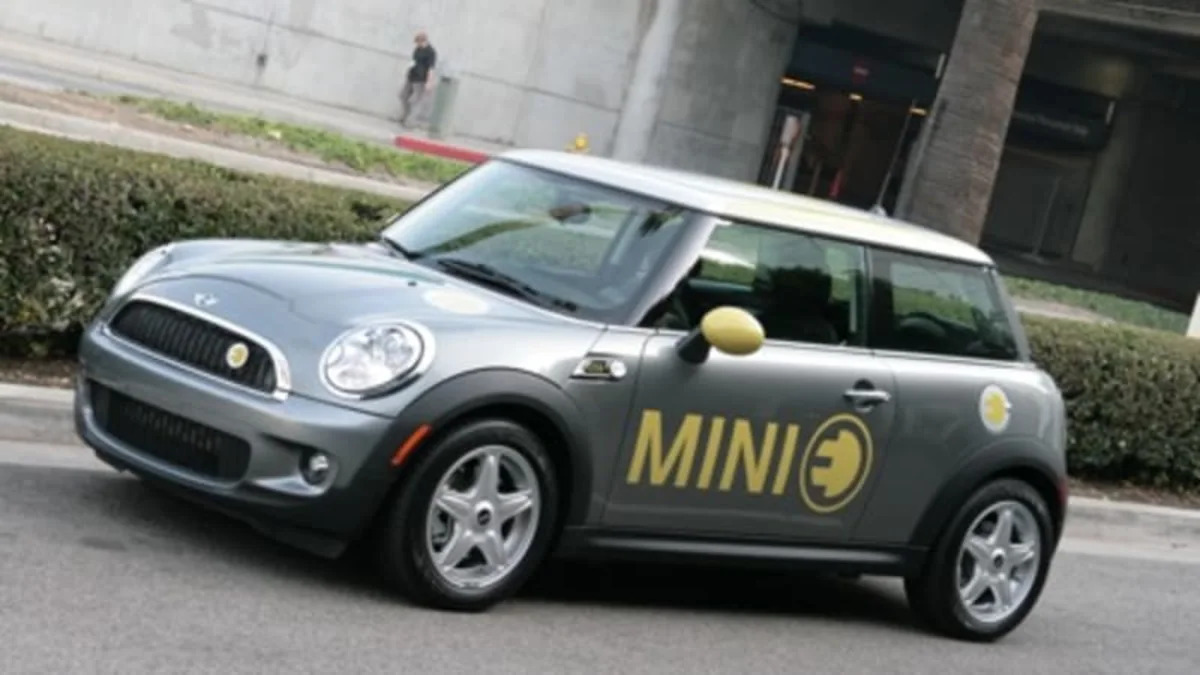
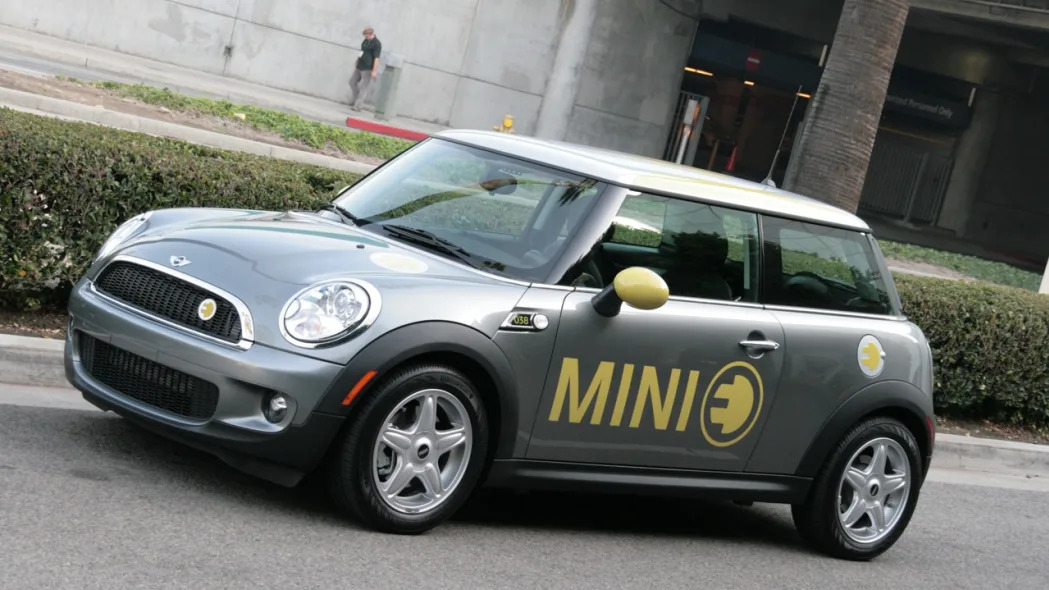

Sign in to post
Please sign in to leave a comment.
Continue